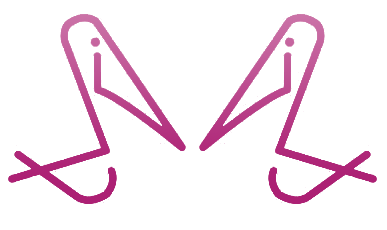
Appreciative Enquiry (AI)
So now we move onto the featured topic of Appreciative Inquiry. You may find it useful to print off this topic and explore some of the ideas away from the computer so you can ‘appreciate’ a new way of thinking
Appreciative Inquiry is a technique for focusing on ‘strengths’ and ‘what is working’ rather than problems, issues and weaknesses. It was developed by David Cooperrider.
It builds on the premise that everybody or every organisation has things that they are good at and it is easier to build on these strengths, rather than trying to fix other things that are not working (i.e. you already know how to do the things you are good at!).
AI also works on the assumption that the language we use creates our reality, in other words if we keep talking about problems or weaknesses we will reinforce them and if we talk about things we are good at and things that are working well we can reinforce and build on these.
In June’s newsletter I introduced an AI model called SOAR which was developed by Jackie Stavros as an alternative to SWOT, you may want to remind yourself of this.
Another useful AI model for Coaching or Group Work is the 5D model, developed by David Cooperrider and Suresh Srivastva. This has the five steps of Define, Discover, Dream, Design and Deliver. This is how you can use the model individually or as a group.
Define – re-framing an issue as ‘an opportunity’
Think of an issue or challenge you have (it may be a personal issue or an organisational challenge). Now think about what you want more of, instead of this issue or challenge. State the problem or challenge as ‘an opportunity’.
For example if you are poor at decision making you might want to have clearer, focused thinking. Or, if you feel your organisation struggles with leadership, you might want inspiring, empowered leaders.
Once you have defined your issue or challenge as ‘an opportunity’ you can move onto the next step.
Discover – appreciating the best of ‘what is’
This step of the model focuses on appreciating what you do well. Think about what you are really good at as an individual and/or organisation. What are your strengths?
Think of a time when you were good at ‘the opportunity’ you’ve identified. Think of people who are really good examples of this.
Can you come up with a positive story about when you or someone else demonstrated ‘the opportunity’ you’ve identified?
Also, take this time to think about all the things you value about yourself and/or the organisation.
This step takes time and it is important to spend enough time thinking like this so you practice appreciating what already exists within you and others.
Dream – exploring what ‘might be’
For this next step get yourself into a positive, open, playful, dreamy mindset. The idea with this step is to explore what might be possible.
What strengths do you or the organisation have that will help with ‘the opportunity’ you’ve identified?
If you had a magic wand and could make a wish – what would you wish for to do with this opportunity?
Take the time to draw a picture showing how things can be in the future – make it as fun and colourful as you can, as your brain will remember this image better the more it stands out.
As with the Discover step, it’s important to spend enough time on this stage – particularly if your brain is not used to thinking this way.
Design – deciding what ‘will be’
Now you’ve spent sometime Discovering and Dreaming it’s time to get more practical and decide exactly what you are going to do.
Choose one thing you can do that will make the biggest difference to you or the organisation.
What key strengths or key behaviours will you use?
What will be an early indicator or clue to your success?
Deliver – making it happen
How are you going to make sure you deliver on this?
What reminders do you need to give yourself?
What support do you need?
How will you reward yourself when you’ve succeeded?
I hope you’ve found this model interesting. I challenge you to try and use this mindset for a few weeks and notice the difference it makes to you and others around you.
If you’d like to explore more about Appreciative Inquiry as an individual or for your team or department please contact us.
